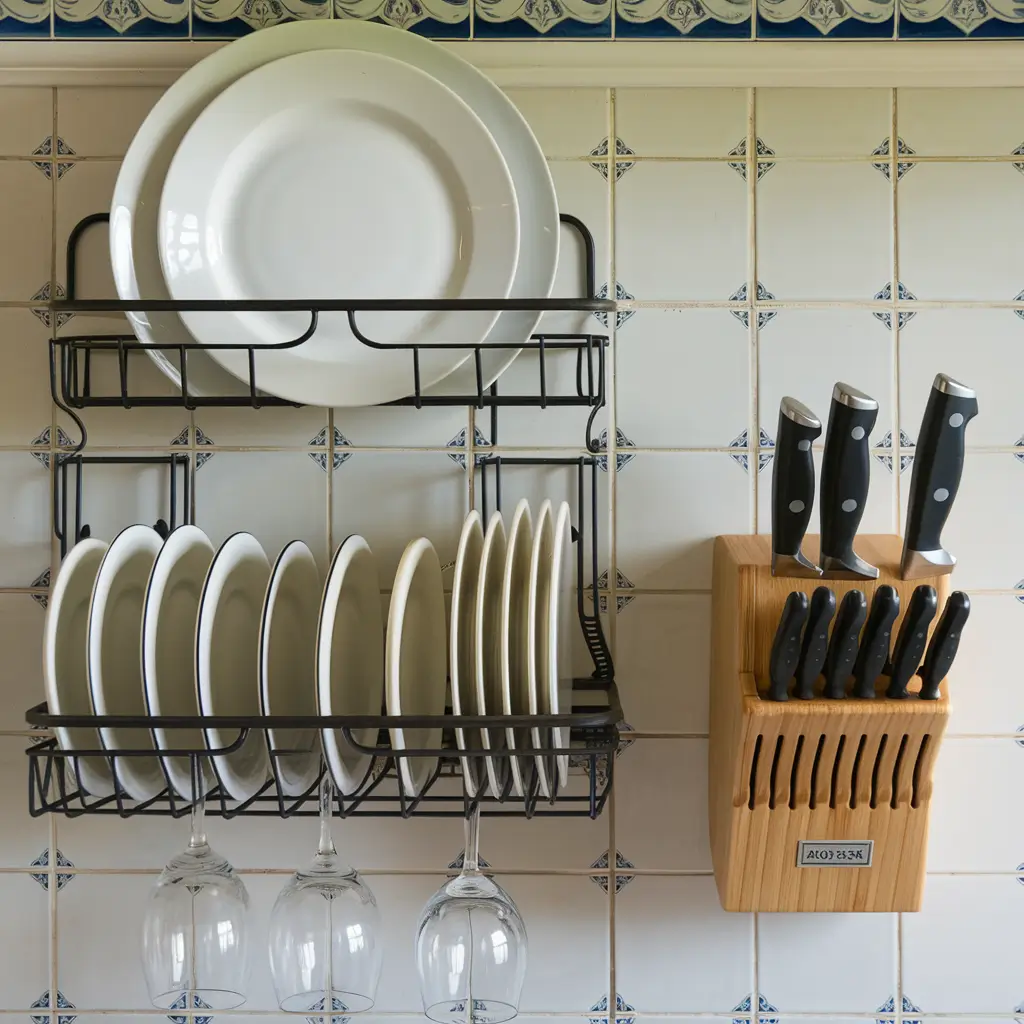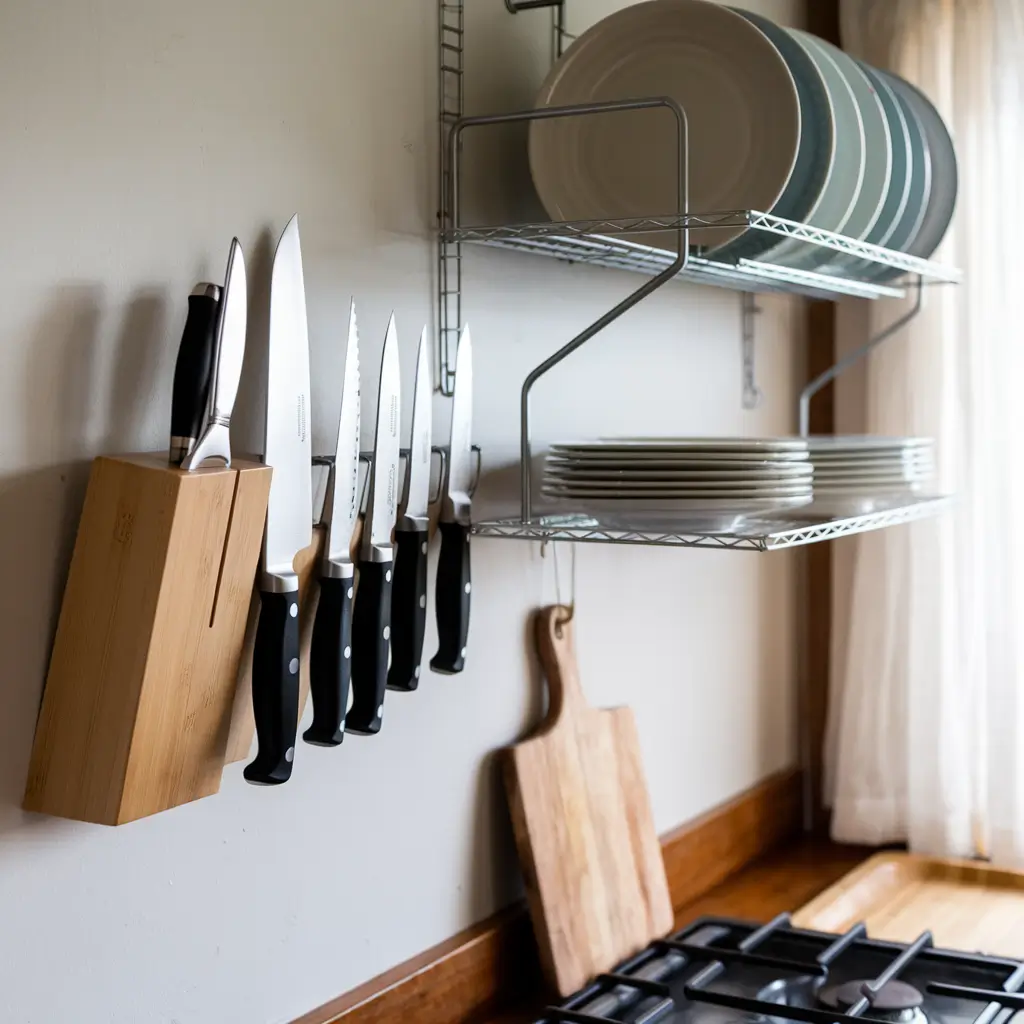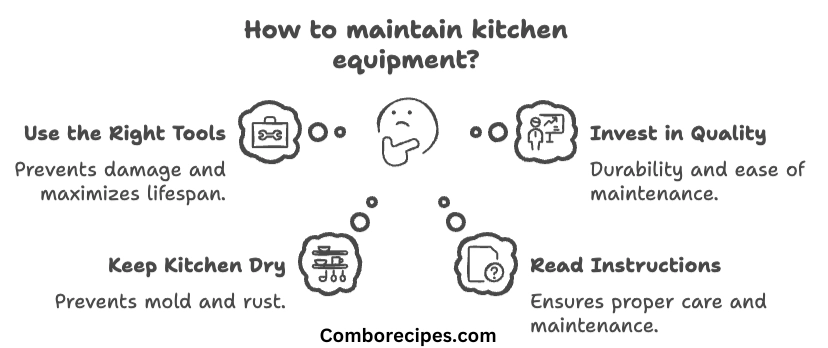As someone who spends a lot of time in the kitchen, I’ve come to realize that taking care of my kitchen equipment is just as important as the meals I prepare. Proper maintenance not only extends the life of my tools but also ensures that my cooking experiences are safe and enjoyable. In this article, I’ll share my personal tips on how to maintain and care for your kitchen equipment, covering everything from cleaning to storage.
Clean Your Kitchen Equipment Regularly
The first step in maintaining your kitchen equipment is cleaning it thoroughly and regularly. I make it a habit to clean my tools after every use. For pots and pans, I use warm, soapy water and a non-abrasive sponge to avoid scratches. When it comes to knives, I wash them by hand rather than putting them in the dishwasher, as the harsh environment can dull the blades over time.

I also pay special attention to my appliances, such as blenders and food processors. I disassemble them after each use and clean all parts with warm, soapy water. This helps prevent any buildup of food particles that could lead to bacteria growth. For wooden utensils, I wipe them down with a damp cloth and a bit of mineral oil every once in a while to keep them looking fresh and to maintain the integrity of the wood.
Inspect Equipment for Signs of Wear and Tear
Regular inspections are crucial to ensuring that my kitchen equipment is safe to use. Here are some specific practices I follow to identify any signs of wear and tear:
- Check Knives for Dullness
I routinely check my knives for dullness by slicing through a piece of paper or a tomato. If the knife struggles to cut, it’s time to sharpen it. For example, I use a whetstone for my high-quality chef’s knife, ensuring it stays sharp and effective. - Examine Cookware for Chips or Cracks
I inspect my ceramic and glassware for any chips or cracks before use. A small chip can lead to a larger breakage during cooking, posing a safety hazard. For instance, I always check my mixing bowls and baking dishes for any signs of damage before I start prepping ingredients. - Inspect Appliance Cords
I examine the cords of my small appliances—like my blender and food processor—for fraying or damage. A frayed cord can be a fire hazard, so if I notice any issues, I either replace the cord or the appliance entirely. For example, I’ve had to replace my old toaster when I found the cord fraying, rather than risking safety. - Look for Signs of Rust or Corrosion
I check my metal cookware, especially cast iron and stainless steel, for any signs of rust or corrosion. If I see any rust spots, I know I need to scrub them off and re-season the cast iron pan to maintain its non-stick surface. - Test Electrical Appliances
Before using my electrical appliances, I do a quick test to ensure they’re functioning properly. For instance, I listen for any unusual sounds when turning on my mixer. If it sounds off, I won’t use it and will investigate further. - Assess Cutting Boards for Cracks or Warping
I carefully inspect my cutting boards for any cracks or warping that could harbor bacteria. If a wooden cutting board has deep grooves or cracks, I know it’s time to replace it to ensure safe food preparation.
By consistently inspecting my kitchen equipment for these signs of wear and tear, I can address any issues promptly and keep my cooking environment safe and efficient.
Store Equipment Properly
How I store my kitchen equipment can significantly impact its longevity. Here are some specific strategies I use to ensure my kitchen tools are well-organized and protected:
- Use Protective Liners for Cookware
I stack my pots and pans with protective liners in between each piece. This prevents scratches and keeps the surfaces looking new. For example, I use felt or silicone liners that cushion the cookware and prevent metal-on-metal contact. - Knife Storage
My knives are stored either in a magnetic strip on the wall or in a knife block. This keeps the blades protected and prevents accidental cuts when reaching for them. I’ve found that using a magnetic strip not only saves space but also allows me to easily access and display my knives. - Flat Storage for Cutting Boards
I ensure that my cutting boards are stored flat to avoid warping. For example, I have a designated shelf where I can stack my wooden and plastic boards horizontally. This method preserves their shape and prevents them from bending over time. - Organized Drawers for Small Gadgets
I use designated drawers with dividers for my smaller kitchen gadgets, like peelers, whisks, and measuring cups. This helps me keep everything organized and easily accessible. For instance, I have a small drawer where I use adjustable dividers to create compartments for each tool, making it easy to find what I need without rummaging through a cluttered space. - Vertical Storage for Baking Sheets and Cutting Sheets
I store my baking sheets and cutting sheets vertically in a designated rack or container. This prevents them from bending or scratching. I’ve found that using a file organizer works perfectly for this purpose, keeping everything upright and visible. - Hang Pots and Pans When Possible
When I have the space, I hang my pots and pans from a ceiling-mounted rack. This not only saves cabinet space but also keeps the cookware easily accessible and prevents scratching. I like to arrange them by size for quick retrieval while cooking.


By following these storage tips, I help ensure that my kitchen equipment remains in top condition, allowing me to focus on what I love most—cooking!
4 Additional Tips for Maintaining Your Kitchen Equipment
1. Use the Right Tools for the Job
One of the best lessons I’ve learned is to use the right equipment for specific tasks. For example, using a non-stick spatula on non-stick pans prevents scratches that could ruin the surface. I always check the manufacturer’s guidelines to ensure that I’m using tools in a way that maximizes their lifespan.
2. Invest in Quality Equipment
I’ve found that investing in high-quality kitchen equipment pays off in the long run. While it might be tempting to go for the cheapest option, quality items tend to be more durable and easier to maintain. When I buy new equipment, I consider the materials used and read reviews to ensure I’m making a sound investment.
3. Keep Your Kitchen Dry
Moisture can lead to mold and rust, which is something I definitely want to avoid. After cleaning my equipment, I make sure to dry everything thoroughly before storing it away. I also keep my kitchen well-ventilated to prevent any buildup of humidity.
4. Read the Manufacturer’s Instructions
Finally, I always make it a point to read the manufacturer’s instructions for each piece of equipment. Different materials and tools have specific care requirements, and following these guidelines helps extend the life of my kitchen gear. Whether it’s knowing the proper way to sharpen a knife or understanding how to clean a non-stick surface, I find that being informed is key to maintenance.

Final Thoughts
Maintaining and caring for your kitchen equipment is essential for ensuring that it lasts and performs at its best. By following these tips—cleaning regularly, inspecting for wear and tear, storing properly, using the right tools, investing in quality equipment, keeping your kitchen dry, and reading the manufacturer’s instructions—you can create a safer and more enjoyable cooking environment. After all, a well-cared-for kitchen is not only a pleasure to work in, but it also helps me create the delicious meals that I love to share with family and friends.



